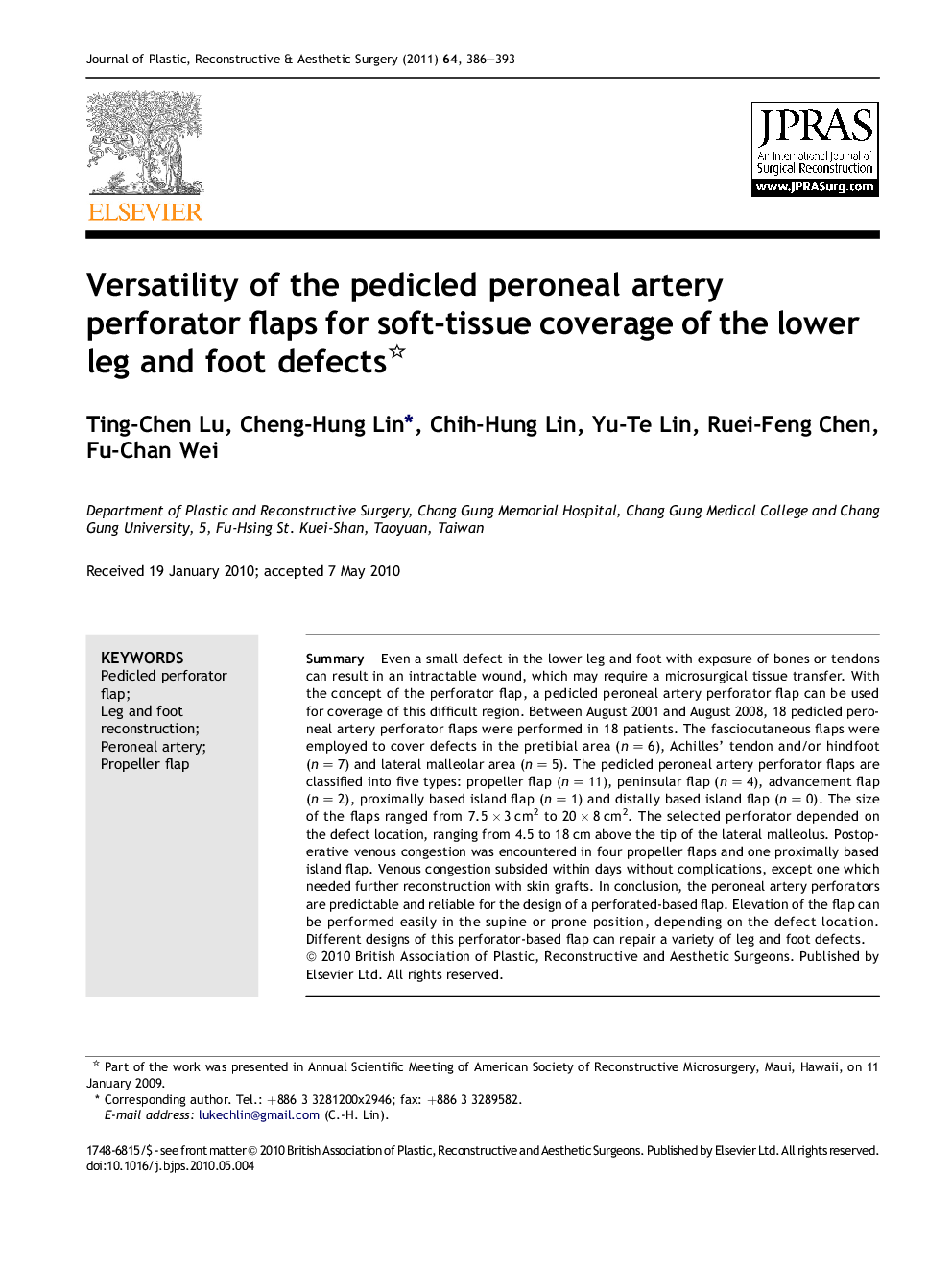| Article ID | Journal | Published Year | Pages | File Type |
|---|---|---|---|---|
| 4119140 | Journal of Plastic, Reconstructive & Aesthetic Surgery | 2011 | 8 Pages |
SummaryEven a small defect in the lower leg and foot with exposure of bones or tendons can result in an intractable wound, which may require a microsurgical tissue transfer. With the concept of the perforator flap, a pedicled peroneal artery perforator flap can be used for coverage of this difficult region. Between August 2001 and August 2008, 18 pedicled peroneal artery perforator flaps were performed in 18 patients. The fasciocutaneous flaps were employed to cover defects in the pretibial area (n = 6), Achilles’ tendon and/or hindfoot (n = 7) and lateral malleolar area (n = 5). The pedicled peroneal artery perforator flaps are classified into five types: propeller flap (n = 11), peninsular flap (n = 4), advancement flap (n = 2), proximally based island flap (n = 1) and distally based island flap (n = 0). The size of the flaps ranged from 7.5 × 3 cm2 to 20 × 8 cm2. The selected perforator depended on the defect location, ranging from 4.5 to 18 cm above the tip of the lateral malleolus. Postoperative venous congestion was encountered in four propeller flaps and one proximally based island flap. Venous congestion subsided within days without complications, except one which needed further reconstruction with skin grafts. In conclusion, the peroneal artery perforators are predictable and reliable for the design of a perforated-based flap. Elevation of the flap can be performed easily in the supine or prone position, depending on the defect location. Different designs of this perforator-based flap can repair a variety of leg and foot defects.
